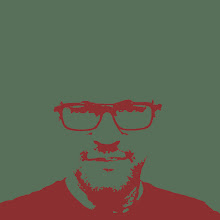To help us learn about what happens to patients before they arrive in the Emergency Department, on Monday our group of med students and interns went to the city's firefighter training center. And, boy, was it cool! We started off learning the basics about the lingo and equipment of firefighting and rescue, which was fascinating enough. But then it was time for us to do a mini version of the training that the firefighters undergo themselves.
It started off in the SCBA (Self-Contained Breathing Apparatus) Confidence Course. This is a custom-built second story loft in a vehicle barn. It's about 50 feet square and only about five feet high inside (so you can't stand up straight). The interior is a maze of low plywood walls, gates, rooms with furniture, and all sorts of obstacles such as large plastic tubes and tangles of wires. And once the door is closed, there's no light. Several manikins representing fire victims were pre-positioned in hard-to-find places (under chairs, behind obstacles). We then divided into groups of three. Each group had to crawl through this maze in the dark, locate the victims, and carry them back to the starting point. And, since structural conditions in a burning building are constantly changing, the instructors latch and unlatch plywood gates behind the teams--in other words, you can't get back the way you went in. Best of all, the instructors brought out the infrared scope, so those of us waiting for our turn could watch the ghostly thermal images of our colleagues stumbling through this maze. (Eerily, the scope shows the reflection of each person's heat in the corrugated metal roof.) It was very hot, and we had the luxury of wearing summer clothes; the real training is done in full protective gear with oxygen tanks. And, of course, the building wasn't really on fire. The point of this is to keep trainees' nerve up when facing a dark, unfamiliar environment, as well as to practice getting around in the dark in a complicated space.
Next, it was into the Buckman Box. This is a custom-built wooden structure measuring about 40 x 30 x 20 feet. It features ceiling/floor platforms that are hinged so that their angle can be changed, and doorframes that are not square--again, this is to simulate conditions in a building that has lost its structural integrity. Basically, you climb through an 18-inch hole up a six-foot, 45-degree ramp to get into the box. Inside it's a three-dimensional maze of sudden sloping dropoffs, ladders into attic spaces, dead-end crawlspaces, and other obstacles. All of this is done on hands and knees or crawling on your stomach. And all in the dark, natch. In fact, there are several paths through the box and you might come out any one of several exit points. Half a dozen of us would crawl in at a time and then gradually emerge from various holes.
Finally we were taken outside to a row of junked cars. Yes, it was time for the vehicle extrication exercise! We suited up in helmets and protective gear and then went through the process of stabilizing a vehicle and opening it up to remove trapped drivers and passengers. We got to use the hydraulic rescue tools, including cutters and spreaders. They taught us some of the finer points of shattering tempered glass, popping car doors out of their frames, cutting through window posts, and pulling up dashboards to get trapped legs out. It was fantastic! And we got an added dose of realism, because while we were out there it started to rain. And then started raining hard, in sheets. And then the lightning started. All the while we're taking hydraulic and electric tools to large chunks of metal. As the instructors pointed out, conditions in the field can get a lot worse than that. But it was still an impressive storm; this one wound up
spawning two tornadoes.
Truly one of the most memorable days of medical school.
Labels: Field Trips, Tales of the ER











